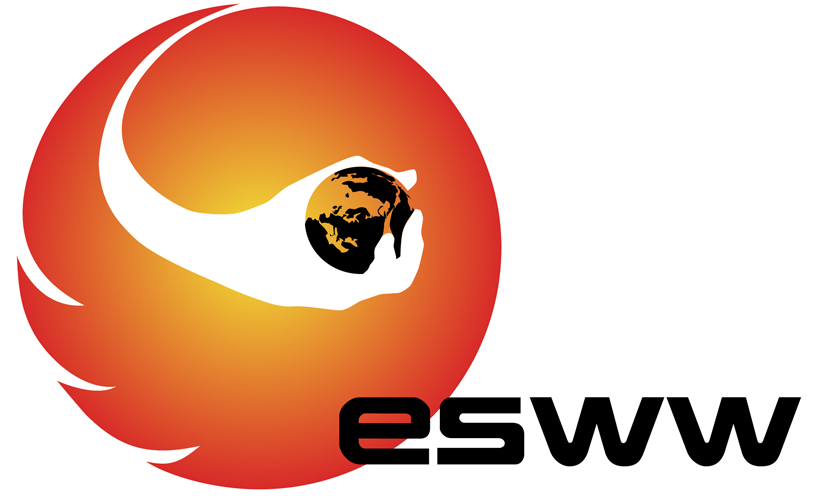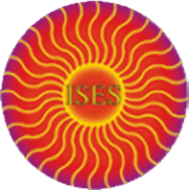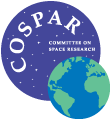Sixth European Space Weather Week
Sixth European Space Weather Week
|
Session:
|
Poster Session 4 Space Weather and Health Issues
|
|
Type: |
Poster session |
|
Date: |
18 November 2009 |
|
Time: |
16:30 - 18:30 |
|
Chair: |
N. Crosby and G. Reitz |
|
Co-chair: |
|
|
Remarks: |
|
|
Seq
|
|
Time
|
|
Title
|
|
Abs No
|
|
|
|
1 |
|
00:00
|
|
Solar Activity Effect on theRate of Compilating Disease in Cardiac Surgery
Sheyner, Olga; Fridman, V.
Radiophysical Research Institute, RUSSIAN FEDERATION
The essential powerful solar flares effect on a rate of post operation bleedings and tachyarrhytmias was revealed from the data of one solar cycle. The latter complication rate was found to increase in 1.5 times during the first 5-7- days after the proton events and reacheed the maximum in the 2nd-4th day. The analysis of the histograms obtained during a non flare periods did not showsuch correlation.
|
|
|
|
|
|
2 |
|
00:00
|
|
Modulation of Galactic CR in Respect to Radiation Hazard for Astronauts and Electronics for Mars Mission
Dorman, Lev
Tel Aviv University (Israel) and IZMIRAN (Russia), ISRAEL
Because the radiation hazard for the Mars mission is determined mostly by galactic CR, we investigate in details CR propagation and modulation in the Heliosphere.
The propagation and modulation of galactic CR in the Heliosphere are determined by interaction of energetic particles with magnetic fields frozen in solar wind and in coronal mass ejections (CME) with accompanied shock waves. The most difficult problem of monitoring and forecasting the modulation of galactic CR in the Heliosphere is that the CR intensity in some space-time 4D-point is determined by the history of solar activity for many months before and electro-magnetic conditions in total Heliosphere. It is main cause of so called hysteresis phenomenon in connection galactic CR – solar activity. From other hand, detail investigations of this hysteresis phenomenon give important possibility to estimate properties of Heliosphere regard to CR modulation. We show that in the frame of convection-diffusion and drift models the galactic CR modulation can be described very well for high energy particles (measured by ground based neutron monitors) and for small energy particles (measured on satellites). We consider here following problems.
1. Hysteresis phenomenon and the problem for galactic cosmic ray (CR) propagation and modulation in the Heliosphere: short history of development
2. Hysteresis phenomenon and the model of CR global modulation in the frame of convection-diffusion theory
3. Even-odd solar cycle effect in CR and role of drifts for neutron monitor (NM) energies
4. The problem for CR propagation and modulation during solar cycle 22 on the basis of NM data
5. Satellite CR data and diffusion time lag for small energy particles
6. Convection-diffusion modulation for small energy galactic CR particles
7. Small energy CR long-term variation caused by drifts
8. The satellite proton data and their corrections on solar CR increases and jump in December 1995
9. Convection-diffusion modulation and correction for drift modulation of the satellite proton data
10. Results for >106 MeV and >100 MeV protons (IMP-8 and GOES data)
11. The satellite alpha-particle data and their main properties
12. Results for alpha-particles in the energy interval 330-500 MeV
13. Main results of the modulation problem solution for satellite alpha-particles
14. Peculiarities in the solution of the modulation problem for small energy CR particles
15. Forecasting of CR intensity variations by integral F near solar activity minimum
16. Forecasting of CR intensity during the period of solar activity increasing
17. Forecasting of CR intensity on the basis of solar magnetic field data
18. Expected differential and integral radiation dose inside spacecraft in the way from the Earth to Mars
19. Expected differential and integral radiation dose inside spacecraft on the Mars in dependence of pressure level
20. Expected differential and integral radiation dose from galactic CR inside spacecraft in the way from the Mars to the Earth
21. Expected integral radiation dose from galactic CR inside spacecraft for the total time of the mission to Mars and back
|
|
|
|
|
|
3 |
|
00:00
|
|
Corrected Fluxes of Magnetospheric Energetic Particles for 3 Solar Cycles
Mursula, Kalevi; Asikainen, Timo; Maliniemi, Ville
Univ of Oulu, FINLAND
Long-term monitoring of the Earth's particle radiation content is crucially important for the human space flight program as well as for the reliable operation of satellites. However, no uniform, consistent database of particle fluxes exists so far for times scales of one solar cycle or longer. The MEPED instruments onboard the low-altitude polar orbiting NOAA/POES satellites have measured the energetic particle fluxes in the range of tens to hundreds of keV since 1978, offering a nearly continuous series of energetic particle fluxes in the magnetosphere during three complete solar cycles.
However, there are several problems in using these data for long-term studies. The most significant problem is that the solid state detectors of the MEPED instruments suffer significant radiation damage. This affects, e.g., to increase the effective energy thresholds of the instrument, leading to underestimated particle fluxes already a couple of years after satellite launch. Before the MEPED data can reliably be used in any long-term study the data has to be calibrated taking into account the decay of the detectors. We present here an improved method for the calibrating of MEPED measurements, and give an estimate of energetic particle fluxes from 1978 to present.
|
|
|
|
|
|
4 |
|
00:00
|
|
Linear and Conjunctional Methods for Recognition of Environmental Influence on the Human Organism
Breus, Tamara; Breus, Tamara; Ozheredov , Vadim
Space Research Institute RAS, RUSSIAN FEDERATION
The analysis of influence of climatic parameters on the population morbidity and mortality is presently developed in many cities of Europe, the USA, Japan and other countries of the world; however influence of such factors, as daily sharp changes of temperatures, atmospheric pressure, geomagnetic activity (GMA) were not taken into account in the most of these studies. The main objective of our work is to reveal influence of the terrestrial (atmospheric pressure and temperature) and space (the geomagnetic activity) weather on the development of sharp cardiological pathologies. The Weather and GMA effects were revealed with help on linear and nonlinear approach in theory of pattern recognition
These approaches can be used for automatic control of Space and Terrestrial weather influence on humans in generalized
forecasting systems which are using satellites.
It can be used for multifunctional medicine diagnostic and selection of optimal medical treatment efficacy.
In multifunctional environmental effects this approach allows to make an objective selection of the most hazardous factors.
Classification of objects taking into account their stochastic behavior.
Forecasting in the wide area of processes.
Construction of systems which are using automatic dividing of objects into classes and also are searching for optimal sizes of conjunctions require extremely large computer performance and are an objectives of our future work. It was shown that a functional dependence of acute cardio vascular pathologies from weather factors is present and that most effectively expressed as biotropic factors are variations of atmospheric temperature. Geomagnetic activity has only 20% input in analyzable development of diseases, however its action is especially effective on a background of variations of ordinary weather, because it affects a vascular tonus of people similar to the meteorological activity.
|
|
|
|







